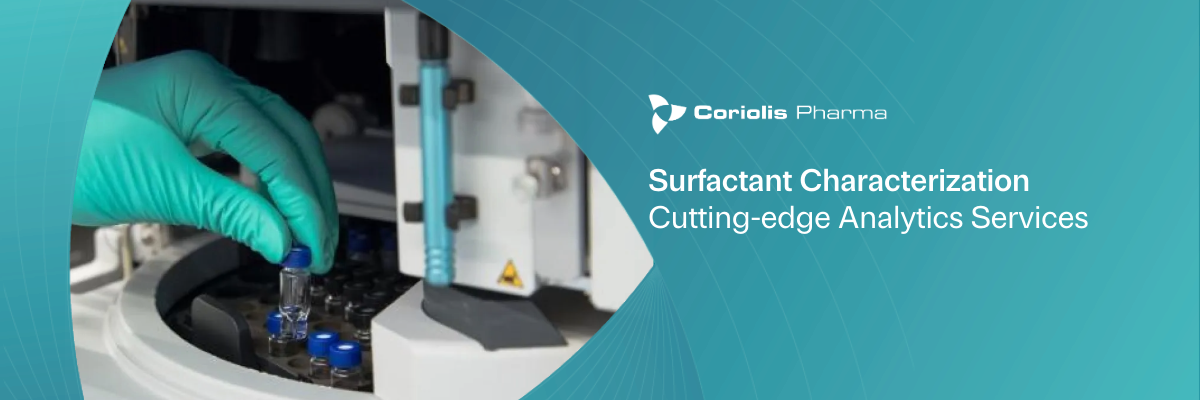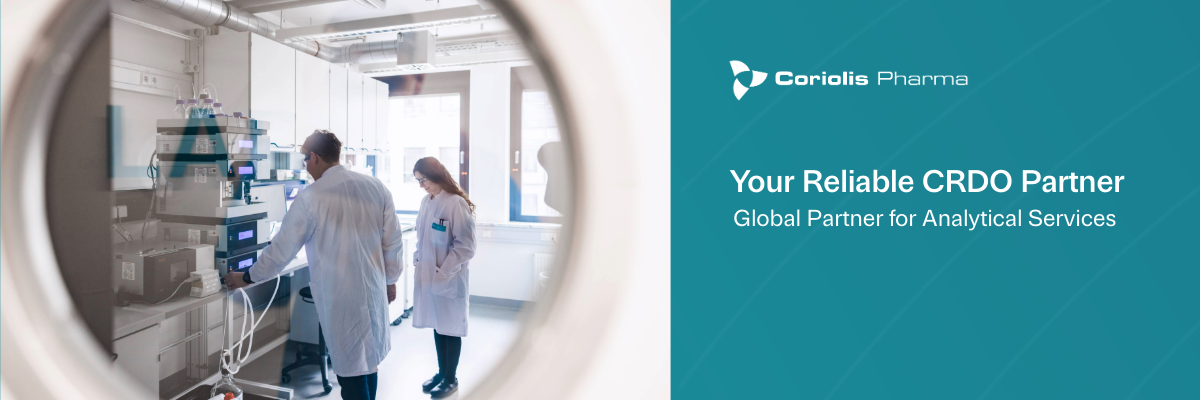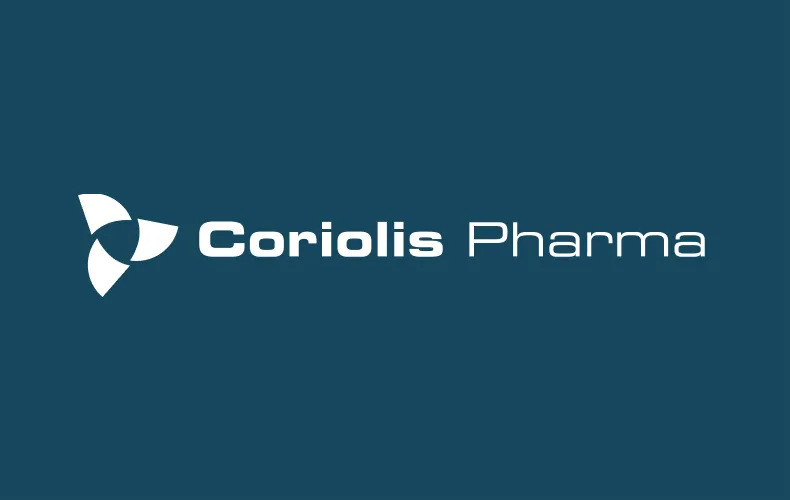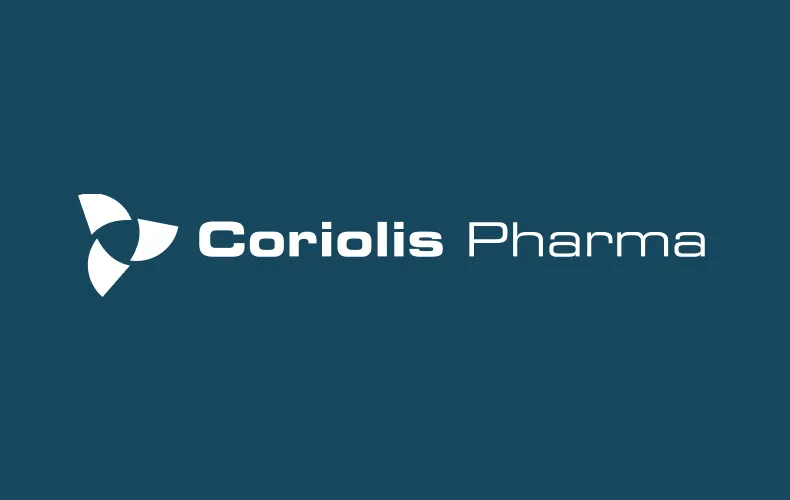The Science Behind Surfactant Stability: How Experts at Coriolis Pharma Analyze and Control Degradation?

What is the role of surfactants in biopharmaceutical formulations?
Surfactants play a crucial role in stabilizing protein-based therapeutics by mitigating protein aggregation and preventing adsorption to surfaces. Polysorbate 20 (PS20) and Polysorbate 80 (PS80) are commonly employed surfactants in biopharmaceutical formulations for this purpose. They function by reducing protein adsorption to surfaces and minimizing aggregation induced by interfacial stresses. (Serno et al. 2013)
However, these surfactants are susceptible to degradation over time, leading to a loss of functionality. This degradation can result in protein aggregation or the formation of free fatty acid particles, which may compromise the stability and efficacy of the therapeutic protein in a biopharmaceutical formulation. (Zegota et al. 2024)
It’s also important to consider the interactions between surfactants and other formulation components. For instance, commonly used silicone oil, can interact with proteins, potentially inducing unfolding, aggregation, or particle formation. The presence of surfactants in the formulation can mitigate these effects by preventing protein adsorption to silicone oil interfaces.
Overall, the choice and concentration of surfactant, as well as its interaction with other formulation components, are critical factors that influence the overall stability and efficacy of protein therapeutics.
What factors affect the stability of surfactants?
Surfactant stability in biopharmaceutical formulations is influenced by several factors, including environmental conditions, and interactions with other formulation components.
- Environmental Conditions: Factors such as temperature and light exposure can accelerate surfactant degradation. Elevated temperatures and exposure to light can enhance oxidative degradation.
- pH Levels: The pH of the formulation also affects surfactant stability. Polysorbates are susceptible to hydrolysis under acidic or basic conditions, leading to the breakdown of the ester bonds and the formation of degradation products. Maintaining an optimal pH range is crucial to minimize hydrolytic degradation and ensure the stability of the surfactant.
- Formulation components and impurities: Certain buffers or additives can have stabilizing or destabilizing influence and particular impurities (host cell proteins, metal ions) are known to have detrimental effects on surfactant stability. (Zhang, L., Yadav, S., John Wang, Y. et al. 2018)
Understanding these factors is crucial for developing stable biopharmaceutical formulations, necessitating comprehensive analytical characterization and careful selection of formulation components. (Schultz-Fademrecht, Torsten, et al. “Comprehensive investigation of factors influencing the degradation of polysorbate,2024)
What methods are used to quantify and characterize surfactants in formulations?
Accurate quantification and characterization of surfactants are vital for ensuring the stability and efficacy of biopharmaceutical formulations. Coriolis Pharma offers a suite of advanced analytical techniques tailored to assess surfactant concentration, detect degradation products, and understand their interactions within formulations.
- Liquid Chromatography with Charged Aerosol Detection (LC-CAD): LC-CAD is a powerful technique employed by Coriolis Pharma for the quantification and profiling of polysorbates and poloxamers. In this method, surfactants are separated using high-performance liquid chromatography (HPLC), followed by detection via charged aerosol detection. This approach allows for sensitive and precise measurement of surfactant concentrations, even in complex formulations. Coriolis Pharma experts compared traditional single-peak chromatographic methods with innovative gradient liquid chromatography (LC) approaches for routine surfactant analysis. Besides providing overall polysorbate quantity, this approach also generates a ‘fingerprint’ chromatogram, separating individual subspecies and hence allows monitoring of polysorbate degradation and their pathways. In-line with this, a recent study highlighted that gradient LC methods, combined with charged aerosol detection (CAD) or mass spectrometry (MS), offer deeper insights into surfactant degradation while maintaining time efficiency. Learn more about the gradient chromatographic methods here.
- Liquid Chromatography-Mass Spectrometry (LC-MS): Coriolis Pharma utilizes high-resolution quadrupole time-of-flight (TOF) mass analyzers coupled with ultra-high-performance liquid chromatography (UPLC) for comprehensive characterization of surfactants. This technique enables the identification of both the surfactants and their degradation products, providing critical insights into surfactant stability.
- Multidimensional Liquid Chromatography: To address the challenges of analyzing surfactants in the presence of proteins, Coriolis Pharma has developed high-throughput multidimensional liquid chromatography techniques. These methods facilitate online protein removal and subsequent surfactant characterization, enhancing the analytical efficiency . Read more about multidimensional liquid chromatography method through here.
By leveraging the state-of-the-art analytical services, Coriolis Pharma ensures comprehensive surfactant characterization, supporting formulation development, stability studies, and GMP compliant release testing. Our expertise enables clients to optimize product performance and ensure the safety and efficacy of their biopharmaceutical products.
Are you having troubles with surfactant degradation and control? Contact us today to get in touch with our experts who are ready to provide tailored solutions for your drug development journey.



